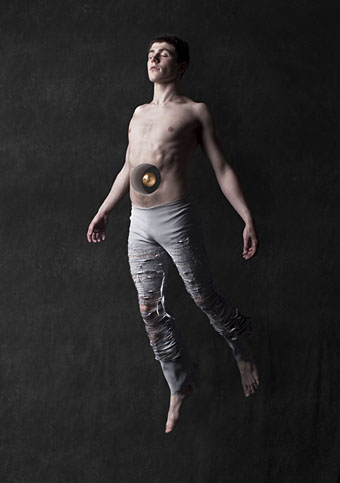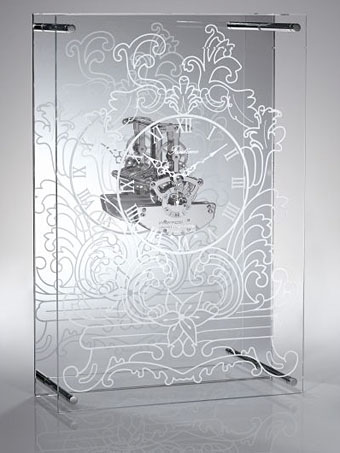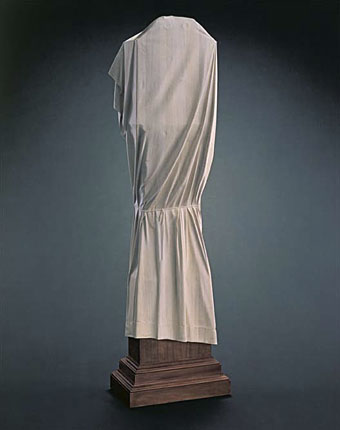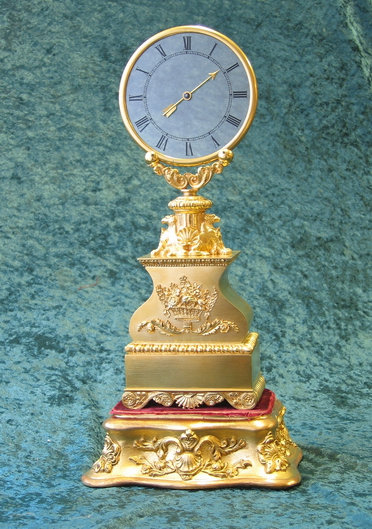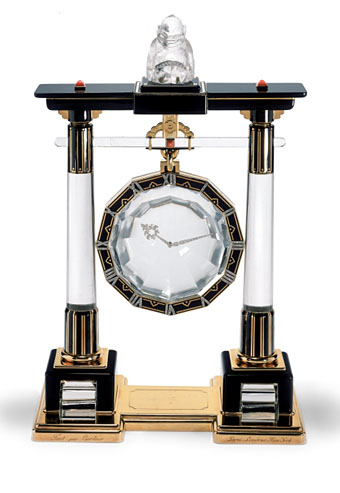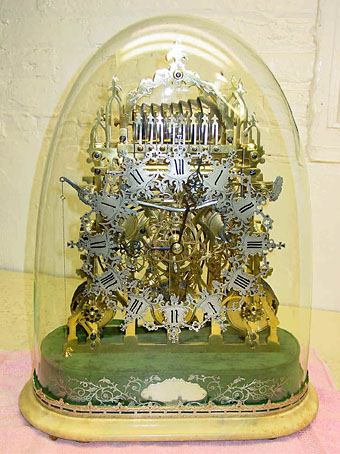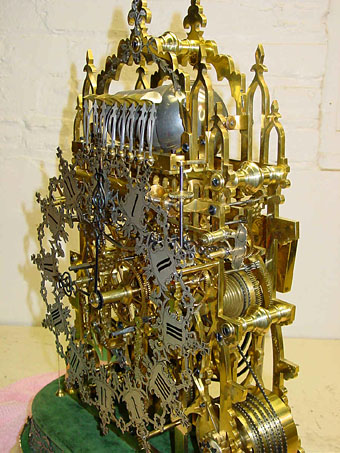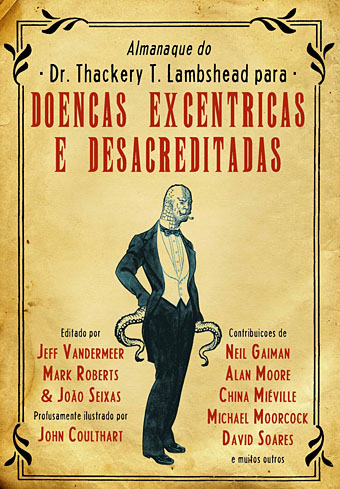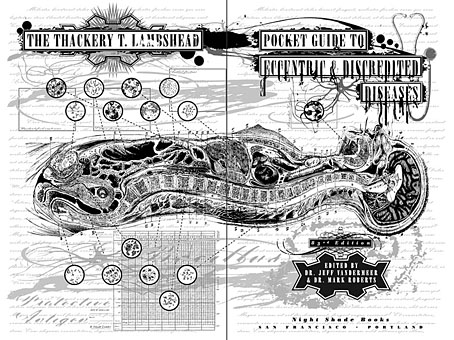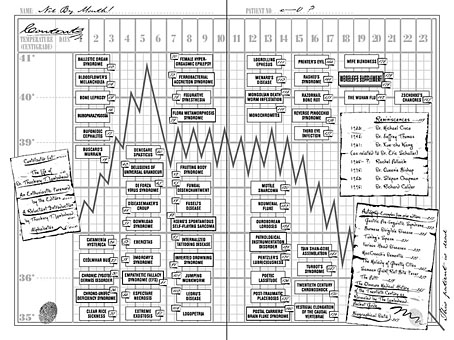The Fool.
I’d like this photo series by young British photographer Jak Flash even if it didn’t feature attractive men; the eye candy is icing on a thaumaturgic cake. The Major Arcana takes the Trumps of the Tarot as its inspiration and manages to reinterpret the symbolism whilst retaining the hieratic nature of the traditional images. Of his reworking, the photographer says:
I developed my own themes based around things like geometric shapes so that I could encode my images with meaning. The images link to each other and can be read to some extent almost as a progressive story, or commentary. Various signifiers are used throughout the images such as cubes, triangles and spheres to help communicate my ideas. Cubes for example are a representation of the material world and triangles show transition. In an image such as The Hanged Man we see two men firmly seated on a large cube, whilst above their heads another cube breaks apart around them. … The Lovers image is an interpretation of the fall of man from Eden. The man represents mankind in his fall after taking the fruit of Knowledge, whilst being denied eternal life. (More.)
The Major Arcana is available in book form at Blurb. Via Homotography, doing all the leg work once again.
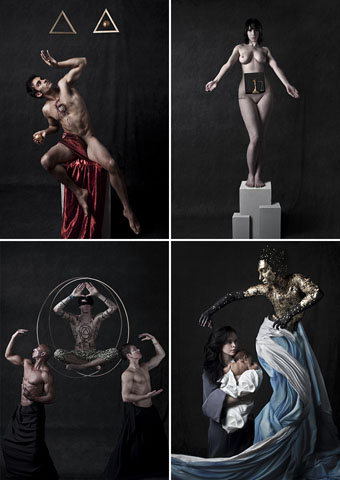
top left: The Lovers; top right: Justice.
bottom left: The Wheel of Fortune; bottom right: The Sun.
Previously on { feuilleton }
• The Sapphire Museum of Magic and Occultism
• Strange Attractor Salon
• The art of Pamela Colman Smith, 1878–1951
• Layered Orders: Crowley’s Thoth Deck and the Tarot
• In the Shadow of the Sun by Derek Jarman
• The Major Arcana

